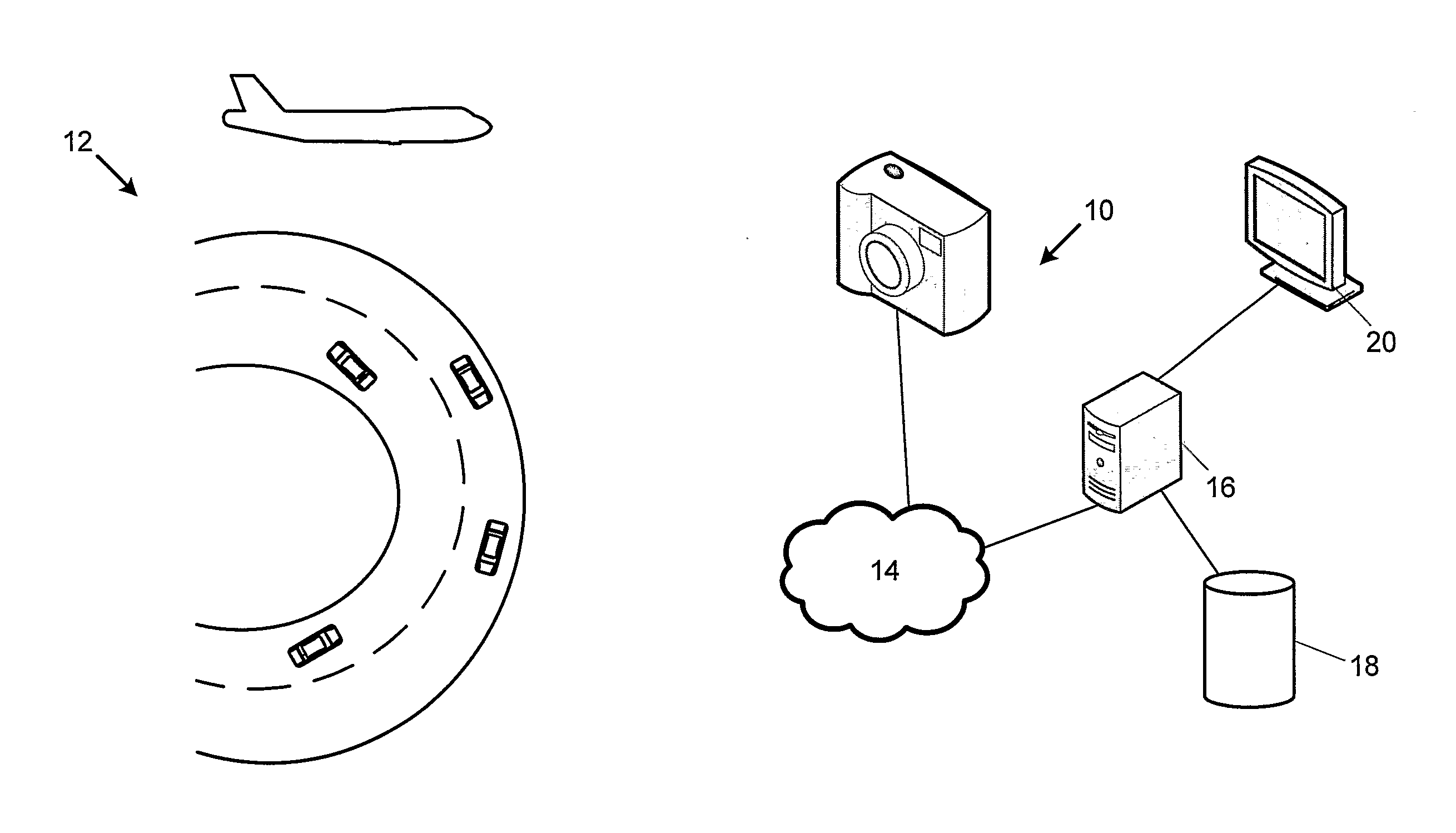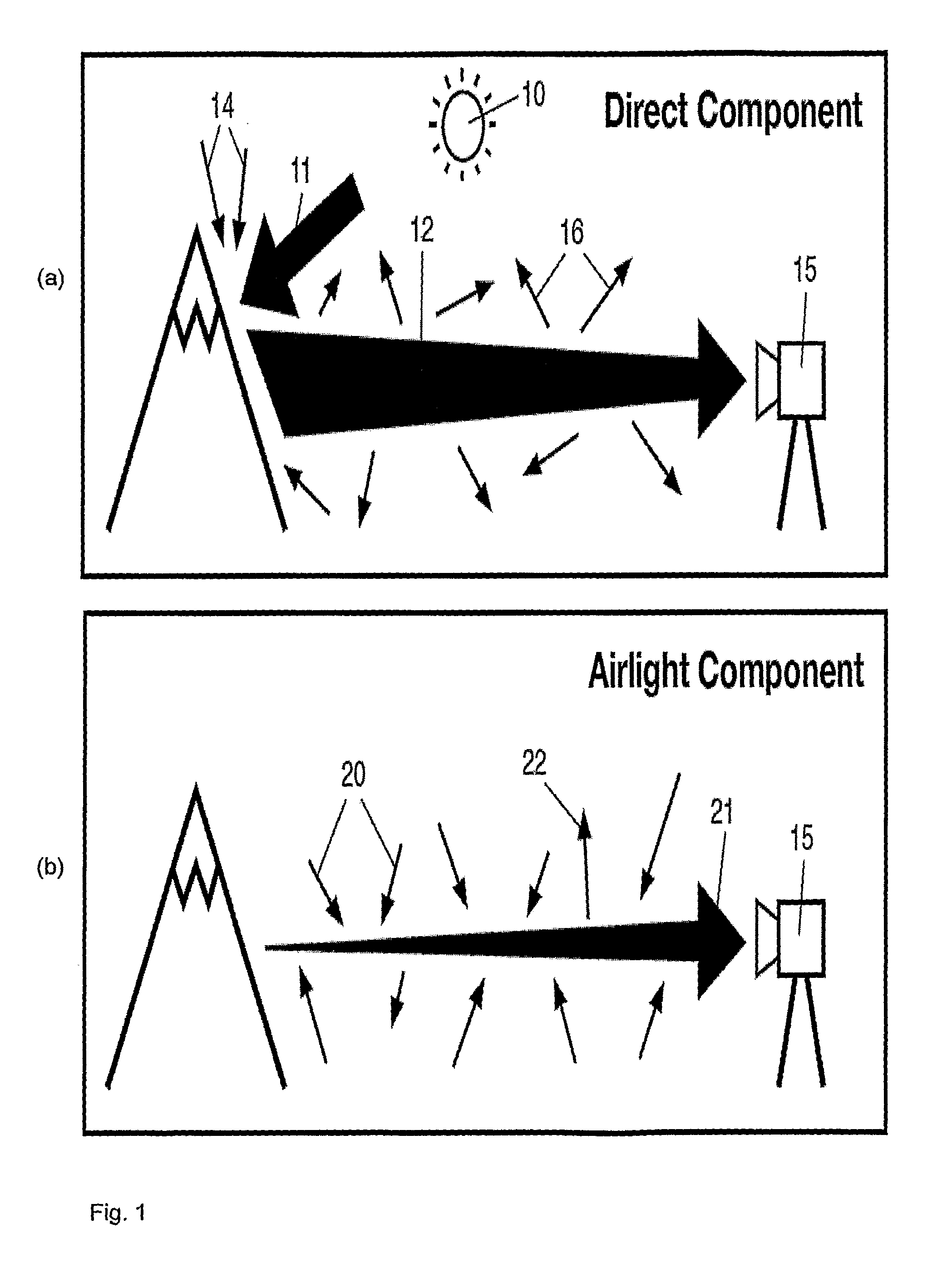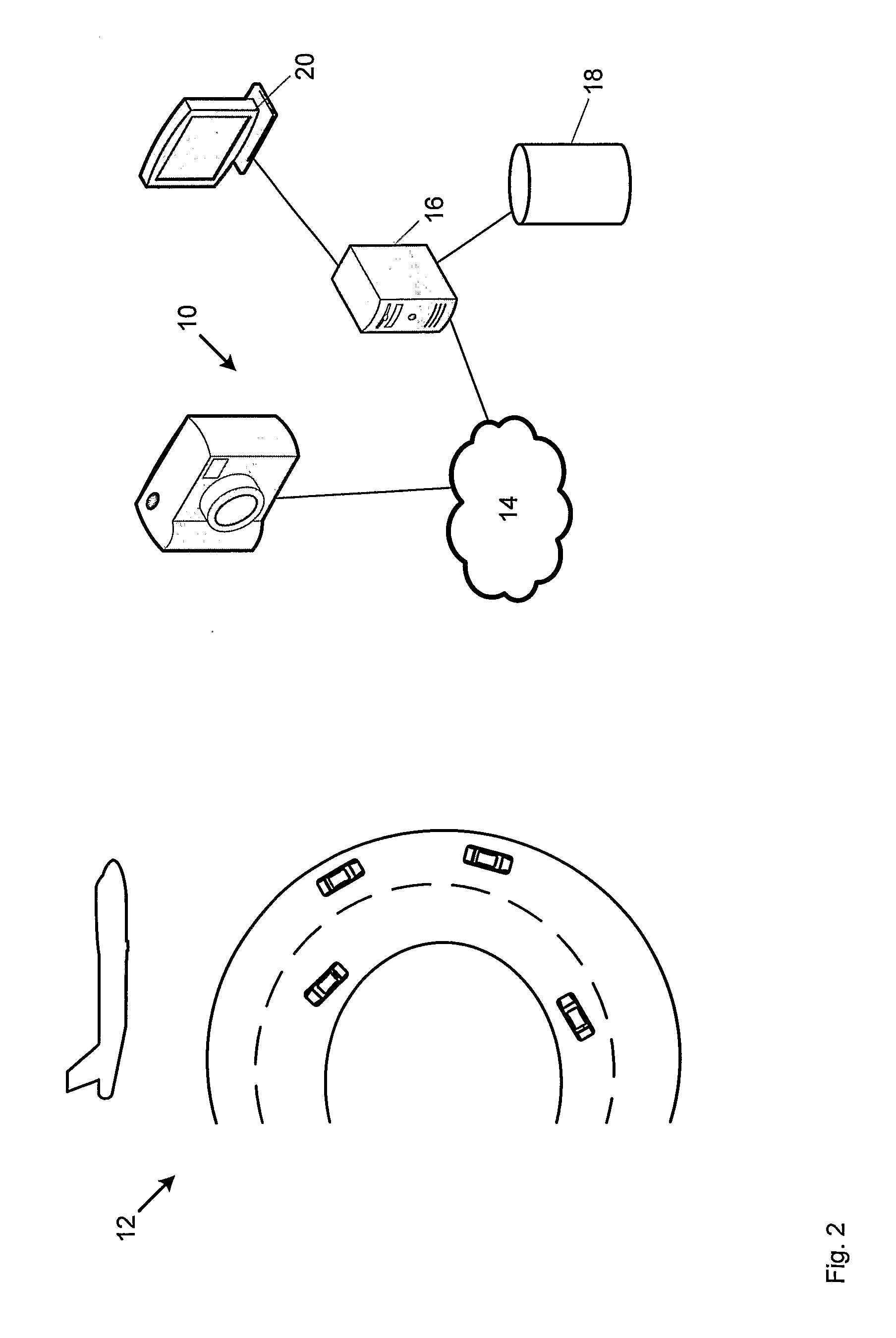Enhancing image data
a technology of image data and image quality, applied in the field of image processing, can solve the problems of poor visibility in bad weather, not always true, and the reliability of these processes degrades rather quickly as the image quality declines
- Summary
- Abstract
- Description
- Claims
- Application Information
AI Technical Summary
Benefits of technology
Problems solved by technology
Method used
Image
Examples
example 1
Where No Reference Image is Available
[0097]In this example, no additional information about the image is available (such as a less noisy image of the scene captured when there was no fog).
[0098]Here for the first cost 60, optical depth values are estimated by trying to match the statistics of the enhanced image to baseline statistics of natural images. Since an image of the scene with less noise should be of higher quality than the captured foggy image, we can estimate the depth of a pixel by determining the distance at which the corrected local image region achieves maximum ‘information’. This strategy will only produce an enhanced image—not an estimate of scene on a clear day.
[0099]In this example we use contrast as a measure of information, although a variety of other metrics could be employed. In this example the contrast metric is calculated using the sum of image gradient magnitudes.
[0100]This example assumes there is significant texture in the image so that values for the con...
example 2
Where a Reference Image is Available
[0130]This example, utilizes an image Lref of the scene captured in good visibility conditions from which a reference depth can be determined.
[0131]For fixed cameras, it's quite easy to record what the scene looks like in clear conditions. For a fixed camera, the enhanced foggy image should appear quite similar to the clear day reference image. As a result, a comparison of the two images can be used to guide the first cost determination 60. Although pan-tilt-zoom cameras are popular for surveillance applications, they often have one or more default orientations, which can be treated as fixed vantage points.
[0132]If the only difference between the reference image and the noisy (i.e. foggy) image is the presence of the fog, each pixel, when enhanced, should be very similar to its equivalent in the reference image. Of course, there are several reasons why an enhanced pixel may differ significantly from the reference image. If the pixel corresponds to...
PUM
 Login to View More
Login to View More Abstract
Description
Claims
Application Information
 Login to View More
Login to View More - R&D
- Intellectual Property
- Life Sciences
- Materials
- Tech Scout
- Unparalleled Data Quality
- Higher Quality Content
- 60% Fewer Hallucinations
Browse by: Latest US Patents, China's latest patents, Technical Efficacy Thesaurus, Application Domain, Technology Topic, Popular Technical Reports.
© 2025 PatSnap. All rights reserved.Legal|Privacy policy|Modern Slavery Act Transparency Statement|Sitemap|About US| Contact US: help@patsnap.com



